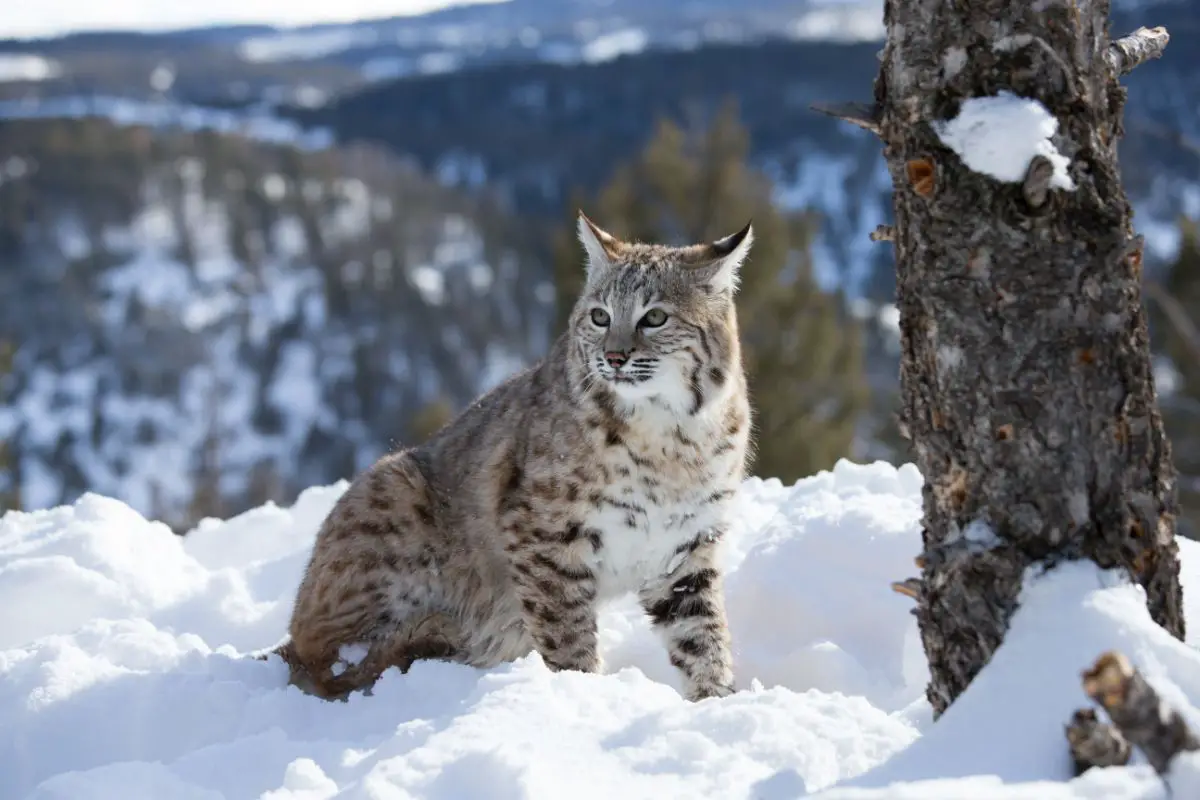Winter can often feel like a dead time of year when it comes to wildlife away from the tropics, and the same is true for many northern states like New Hampshire (NH).
The leaves have fallen. The water’s frozen. Plenty of animals have either left for greener pastures or settled down to hibernate.
It certainly feels like, at least as far as nature is concerned, the good times of summer are over, replaced with an unsettling quietness.
However while life certainly changes in winter, it very rarely stops. If you know where and what to look for, you’ll find that there’s plenty of wildlife still to be found under the surface.
Which is what this guide is all about. We’re going to show you what sort of wildlife you can still find during winter in New Hampshire!
Eastern Moose
Starting with the biggest animals in North America, we have the Eastern Moose subspecies that can be found around and in NH.
Larger animals generally can regulate and retain body temperature better. So for moose, combined with a thick layer of fur and fat, being big is an advantage.
Like many of the animals that survive in winter whilst being active, moose end u changing their diets somewhat to accommodate the drop in temperature.
Moose will eat aquatic vegetation that is rich in nutrients during warmer months (most of which is under a thick layer of snow and ice by winter), so moose will adapt by building up fat and a thicker fur coat in the run-up to winter, as well as eating woodier vegetation when they can no longer eat their preferred diet.
This new diet will include woody vegetation like maple, balsam fir, and even poison ivy! Their long stick-like legs allow them to wade through incredibly high snowfall to reach as many plants as they can
And given that they can weigh as much as several horses, there’s a lot of eating that need to happen for moose!
Canadian Lynx
Probably the largest predator that stays in NH during winter, the Canadian lynx is practically built to survive the coldest time of year. And given that they often also have cubs around this time, it is just as well!
Their proportionally long legs help them move and run through fields of deep snow, as their comically large paws come into use as nature’s snow shoes.
Add to that a dense coat of fur that traps warm air under it, and excellent night vision, and you have an animal that is ready for the cold, dark days of winter in the woodlands of North America.
Canadian lynx will primarily hunt on snowshoe hares during the winter (another species that survives quite well in winter without hibernating), and will often only settle in areas where snowshoe hares can be found.
(Interestingly enough, this dynamic is often used as a case study of the relationship between predators and the number of prey animals they can hunt.
Bobcat
Very closely related to the Canadian lynx, the bobcat (also known as the red lynx on account of its slightly darker fur coat) is another medium-sized cat that survives in New Hampshire during the colder parts of the year.
While these species are very similar in many cases, and could potentially need to compete for resources during the colder months, the fact that bobcats tend to prefer woodland and forested areas, whilst Canadian lynx prefer more open environments, means that they rarely compete directly for food or resources.
Like their northern cousins, bobcats have thick fur that insulates them from the cold, with large paws and thick padding to help insulate their feet from the colder ground (though they lack the longer legs of their relatives).
Bobcats are the perfect opportunistic predators meaning that, unlike Canadian lynx, which will almost exclusively eat snowshoe hares, the bobcat can feed on a wide variety of animals that they have access to, from small rodents, to birds, to rabbits and hares to even larger animals, such as deer, sheep, and goats.

Chickadees
Because chickadees need to maintain territories for food and water, they are often forced to avoid flying in colder weather.
And yet, this unassuming little bird can survive the coldest parts of winter, despite being incredibly small.
Fortunately, their small size allows them to now require too much food, even if their high metabolism requires them to stay active, as well as benign able to eat plenty of different items, from insects to fruit, nuts, and berries.
Great Gray Owl
Ah, yes. The terror of all field mice that flaps silently in the night. Owls are a bird of prey that do not tend to migrate outside of leaving their nests when they are old enough, so being able to hunt in the cold winter is crucial.
Fortunately, the great gray owl is almost tailor-built to survive through the winter in New Hampshire. Their great height and size (most of which are feathers of some kind) help keep the bird warm as the temperature drops.
What’s more, their asymmetrical ear holes allow them to detect where sounds are coming from in the dead of night, giving them another advantage when it comes to hunting their prey along with their keen eyesight.
And then, of course, there are their talons, the trademark weapon of all birds of prey.
Their claws can penetrate up to 15 inches below the snow crust that forms on the ground to reach their prey mice and other small rodents.
Keep in mind that this crust can support the weight of at least one adult human, so this amount of power and precision is incredible.
Then again, when you’re trying to survive winter, you’re going to need some pretty impressive tools to survive!
Snapping Turtle
Speaking of incredible feats of survival in the winter, did you know turtles survive winter in NH?
When it comes to animals that survive the cold winter of New Hampshire, turtles and other reptiles seem like the last animal that you would think could survive the freezing north.
However, you’ll be surprised just by what these particular animals can survive with just the right adaptations!
Snapping turtles are found across the eastern coast of North America, and are not known to migrate further south. Most reptiles in this corner of the United States simply hibernate through the worst of the cold.
And while the snapping turtle can also do the same, there are also cases where snapping turtles have stayed active through the winter months too.
This is especially impressive, given that a turtle’s body temperature relies on the surrounding temperature to stay active. By all accounts, they should be freezing to death!
And yet there they are, swimming underneath the icy surface of lakes and ponds in January!
During winter months, they can rely on reserves of energy, while the turtle’s body absorbs oxygen from the surrounding water and into their system to stay alive.
They can even rely on anaerobic respiration for a short time, too, if the oxygen levels of a body of water drop too low.
This is why, instead of lasting maybe three minutes in icy water as humans do, they can last three months instead!
Final Thoughts
So, how many of these animals did you recognize?



